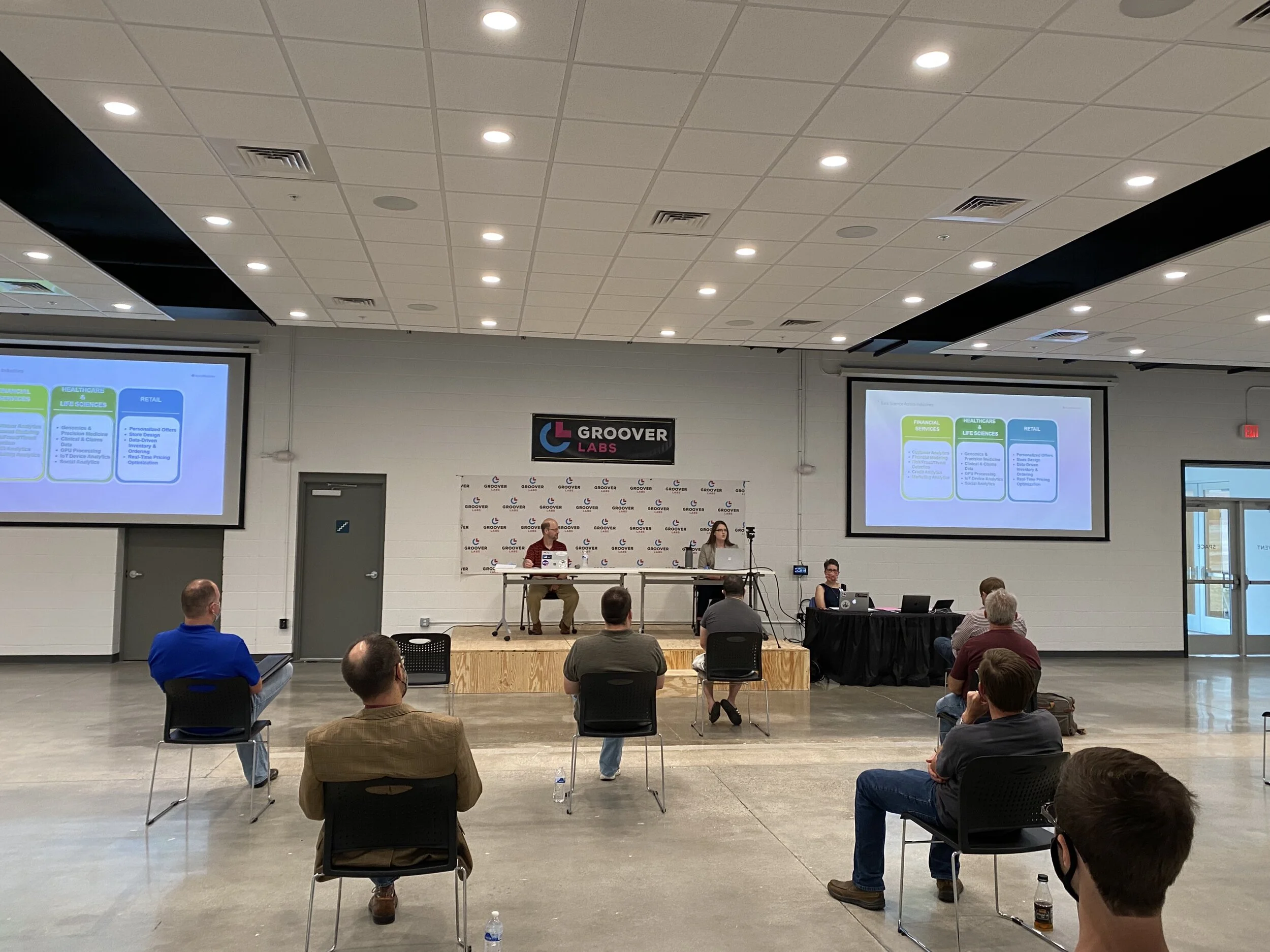Earlier this month we hosted the second in our speaker series with data scientist Jennifer Akers. She discussed the emerging field of data science and how data analyses impact business strategy. In addition, Akers provided information about how to prepare for a career in data science or how to pivot a current career into the field. Rounding out the presentation was a conversation about a lack of diversity in the field and how we can do better.
We host these events because we hope to keep our community connected during Covid-19. We understand, however, that some people are eager to attend events in person while others would rather watch from home, either because of Covid-19 or for convenience. To reach both audiences, we developed a hybrid in-person and online format, which requires, essentially, the creation of two separate shows we then mold into one—a final product suitable for both our event space and in your home.
If you attended our September event online, you may have noticed a new format. We changed video platforms from Zoom to YouTube Live. For the first event with Unified eSports Association CEO Ramsey Jamoul, we used the online video meeting and webinar platform Zoom. You’ve certainly heard of Zoom by now, as its ease-of-use and high-quality video delivery has become the de facto platform of choice in 2020. We really liked Zoom, but we learned from this first event that we had needs beyond a standard meeting or webinar.
YouTube Live
We debated and settled on YouTube Live, which delivers high-quality video streaming along with a live chat room. As any live feed gamer or Twitch user will tell you, YouTube Live won’t operate without an encoder, which is either software or external hardware that converts your content into a digital format for streaming.
Encoders
We chose software encoder Streamyard, which comes at a reasonable price and offers a suite of broadcast-quality features. For example, you can add and remove speakers from the livestream with ease. If your presenter has a PowerPoint, you can include them alongside their slides. If you have more than one speaker, you can transition the feed into a split or multi-split screen format. Streamyard also records the feed so you can post it to your channel afterward.
Example of an early sketch of our system setup for the 9/22 talk with Jennifer Akers.
With options like these, we can reshape a one-way presentation into one with multiple levels of interactivity. For example, after Akers’ introductory talk, host and Flint Hills Group CEO Dave Cunningham interviewed Akers about her experience in the field, how she got started, and what she recommends people do to prepare for a career in data science. From there, we transitioned into a Q&A from both the in-person and online audiences.
Practice, Practice
Several moving pieces go into producing an event. We aren’t a professional broadcast studio, but we borrowed the basics from them. We write a script beforehand so we remember to thank our sponsors and provide important information the audience needs to know. A few practices leading up the event help us refine the flow. This includes mimicking the event sound and video logistics (each event is slightly different) to make sure we’ve set up everything correctly.
Sound and Video
Our event venue comes complete with laser projectors, drop down screens, and microphones. To host hybrid in-person and online events, we need to ensure those who attend online hear the same quality of sound as those in-person. Standard laptop microphones don’t capture sound the same way handheld mics and lavaliers do; and, since we have the equipment and capability, we want to use them to create an awesome experience. Each event requires different versions of sound tweaking depending on the speaker. First we map out a set up, then we test it. Then we test it again and again. And again.
Teamwork
Last but not least, we assign roles to staff. For the last event, we had a producer and assistant producer. Typically the producer is the point of contact with the speaker prior to the event. Once the show begins, the producer controls Streamyard, which means she creates the event, connects it to YouTube, maps out the different cues and camera changes, and then manages all visual aspects of the presentation. The assistant producer sits next to the producer and helps her work through the script, cue by cue, and monitors the chat room.
Attendance doubled for our second event, and we’re excited for our third on October 15, which will feature the team from Greenfield Robotics. And if you’re curious about how it will differ from previous events, I’ll say, without giving too much away, that we’ll be bringing in feeds from outside Groover Labs. We haven’t worked out all the logistics yet, but we’ll have them down pat by October 15.

